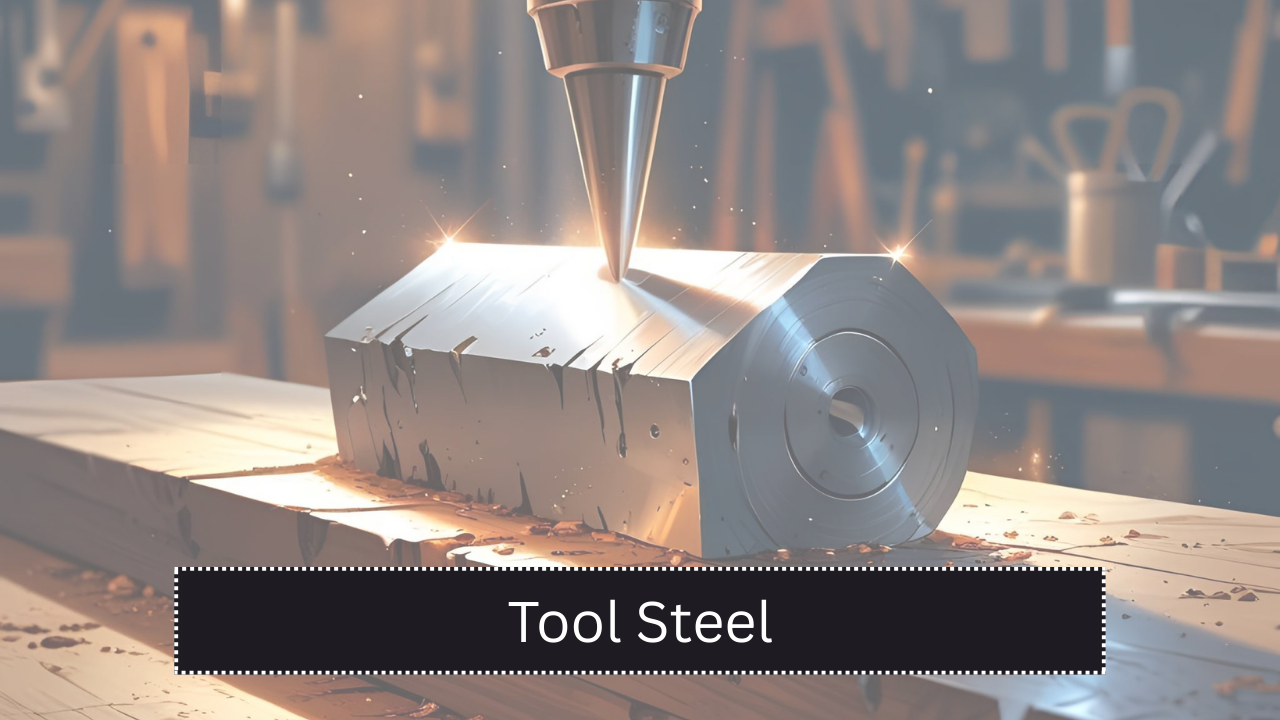Tool steel is a special type of steel designed to make tools and dies. This material is known for its hardness, resistance to wear, and ability to hold a sharp edge. Tool steels are used in many industries such as manufacturing, construction, automotive, and aerospace. They can handle extreme pressure and temperature, which makes them perfect for cutting, shaping, and forming other materials. This article explores tool steel’s types, properties, applications, and classifications in detail.
What is Tool Steel?
Tool steel is a type of carbon and alloy steel that is well-suited for making tools. It is made with specific elements that provide strength, toughness, and resistance to abrasion. These steels are usually heat-treated to increase hardness. Unlike regular carbon steel, tool steel can perform well in high-stress environments.
Key Properties of Tool Steel
Tool steel is popular due to several unique properties. These features make it different from regular steel types.
| Property | Description |
|---|---|
| Hardness | Can be hardened through heat treatment to resist wear. |
| Toughness | Can absorb energy and resist breaking during use. |
| Wear Resistance | Withstands surface damage and stays sharp longer. |
| Heat Resistance | Maintains strength and performance at high temperatures. |
| Machinability | Some tool steels are easier to machine than others, depending on composition. |
| Corrosion Resistance | Certain grades have added chromium or other elements for rust prevention. |
Main Elements in Tool Steel
Tool steels are made using a variety of elements that give them their special properties.
| Element | Role in Tool Steel |
|---|---|
| Carbon | Increases hardness and strength. |
| Chromium | Adds hardness, wear resistance, and corrosion resistance. |
| Vanadium | Improves wear resistance and refines grain structure. |
| Molybdenum | Enhances toughness and heat resistance. |
| Tungsten | Helps maintain hardness at high temperatures. |
| Cobalt | Increases red hardness (hardness during cutting heat). |
| Manganese | Improves strength and hardenability. |
Types of Tool Steel
Tool steel is categorized into different groups based on its characteristics and uses. Each type is made for specific working conditions.
1. Water-Hardening Tool Steel (W-Series)
- Hardened by using water as a quenching agent.
- Least expensive among all tool steels.
- Best for cold working tools like chisels and punches.
2. Air-Hardening Tool Steel (A-Series)
- Hardened by air cooling, reducing the chance of cracking or warping.
- Used for complex dies, forming tools, and high-precision components.
3. Oil-Hardening Tool Steel (O-Series)
- Hardened using oil quenching.
- Offers a good balance of hardness and toughness.
- Used for hand tools, knives, and cutting tools.
4. Shock-Resisting Tool Steel (S-Series)
- Made to handle sudden shocks and impact.
- Used for hammer dies, chisels, and other impact tools.
5. High-Speed Tool Steel (T-Series and M-Series)
- Retains hardness at high temperatures.
- Common in cutting tools like drills, taps, and milling tools.
- T-Series is tungsten-based; M-Series is molybdenum-based.
6. Hot-Working Tool Steel (H-Series)
- Suitable for high-temperature operations like forging and extrusion.
- Used in die-casting molds and hot shears.
Comparison: Tool Steel Types and Uses
| Tool Steel Type | Hardened By | Main Use | Strength | Best Feature |
|---|---|---|---|---|
| W-Series (Water) | Water | Cold work tools like punches | Medium | Cost-effective |
| O-Series (Oil) | Oil | Knives, hand tools | Medium-High | Good balance of properties |
| A-Series (Air) | Air | Dies and molds | High | Minimal distortion |
| S-Series (Shock) | Oil/Air | Impact tools like hammers | High | Excellent toughness |
| H-Series (Hot Work) | Air/Oil | Die casting, forging dies | High | Heat resistance |
| M & T-Series (High Speed) | Air | Cutting tools, drills | Very High | Red hardness |
Applications of Tool Steel
Tool steel is used in many fields where durability and precision are essential.
| Industry | Application |
|---|---|
| Manufacturing | Dies, molds, cutting tools, jigs, fixtures |
| Construction | Drill bits, chisels, saws, punches |
| Aerospace | Precision components, engine parts |
| Automotive | Gears, axles, dies, engine parts |
| Agriculture | Blades, shearers, tilling equipment |
| Metalworking | Milling cutters, lathes, tapping tools |
| Defense and Military | Weapon molds, armor cutting tools |
Advantages of Tool Steel
Tool steel is chosen for its long list of advantages in high-performance environments.
- Long Service Life – Stays sharp and functional over extended use.
- Excellent Strength – Can cut or shape tough materials easily.
- Heat Resistance – Works well even under high friction and temperatures.
- Toughness – Withstands impact and pressure without cracking.
- Low Maintenance – Durable surface reduces wear and tear, needing less upkeep.
Limitations of Tool Steel
While tool steel is highly useful, it also has some downsides:
| Limitation | Explanation |
|---|---|
| Cost | More expensive than regular steel due to added elements and processes. |
| Brittleness (in some grades) | High hardness can lead to brittleness in certain conditions. |
| Machinability | Some types are harder to cut and machine after hardening. |
| Corrosion Susceptibility | Not all tool steels are rust-resistant without coatings or treatments. |
Choosing the Right Tool Steel
Choosing the best tool steel depends on your working environment and expected tool performance. Consider the following when selecting:
- Work Temperature: For high-heat environments, choose H-series or high-speed steels.
- Toughness Needs: Use S-series if the tool must absorb impact.
- Edge Retention: For sharp cutting edges, go with high-carbon or high-speed steels.
- Wear Resistance: For repeated use, opt for A-series or M-series steels.
- Budget: W-series offers acceptable performance at a lower cost.
Heat Treatment and Tool Steel Performance
Heat treatment is a crucial process in tool steel production. It involves heating the metal to a high temperature and then cooling it under controlled conditions. This process:
- Increases hardness
- Enhances toughness
- Refines grain structure
- Improves wear resistance
Improper heat treatment can lead to cracking, brittleness, or poor performance. Therefore, it must be done carefully based on the steel type.
End Notes
Tool steel plays an essential role in industrial and manufacturing tools. With the ability to resist wear, maintain shape, and perform under stress, tool steel is ideal for heavy-duty applications. The wide range of types and compositions allows it to be customized for different needs. Understanding its properties and choosing the right grade ensures better tool life and improved efficiency. For engineers and manufacturers, tool steel remains a reliable choice for high-performance tools and machinery parts.

